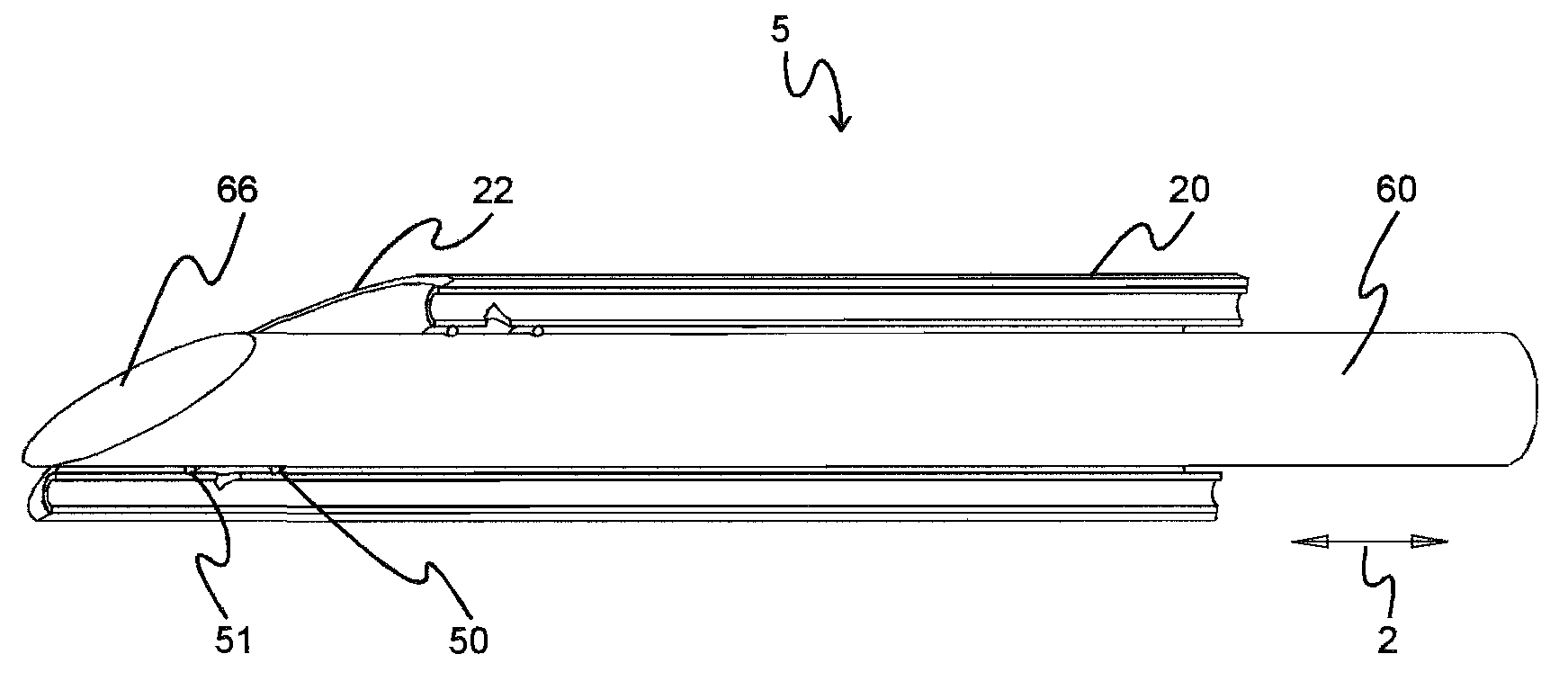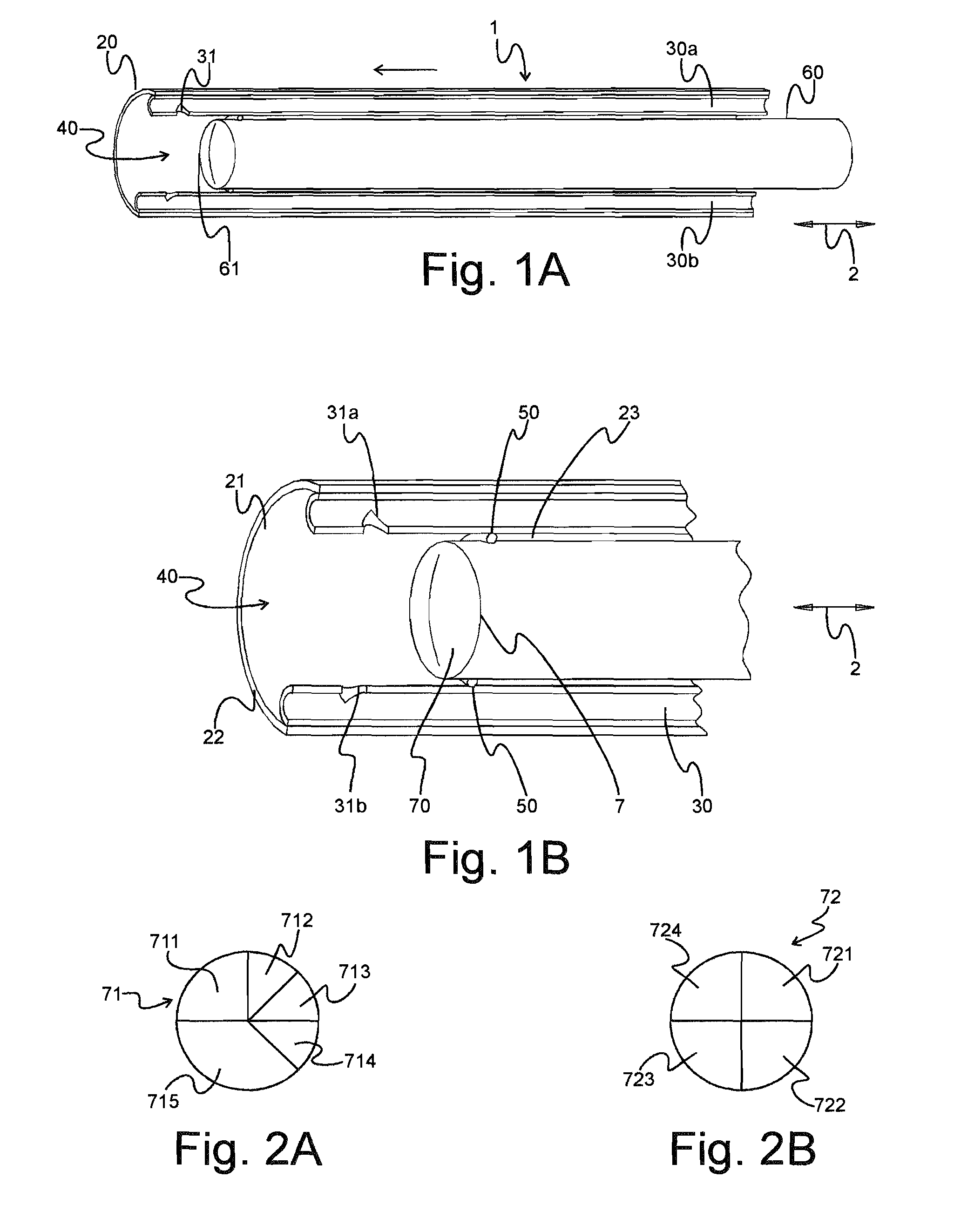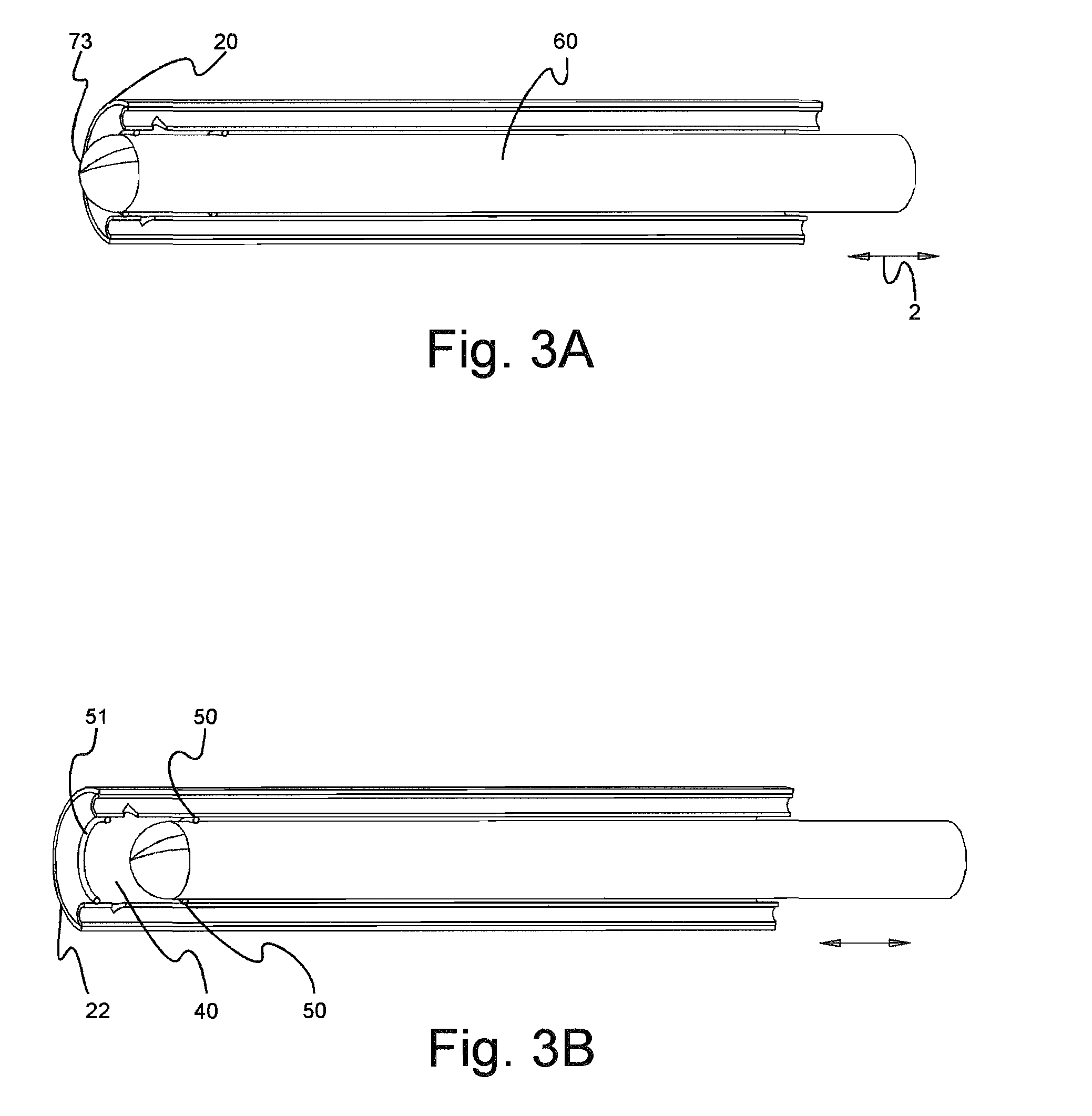Devices and Methods for In-Vivo Pathology Diagnosis
a pathology and in-vivo technology, applied in the field of endoscopy, can solve the problems of inability the inability of the human eye to distinguish the various cellular outlines and internal cell structures of in-vivo tissue, and the inability of the contact endoscope to penetrate into the deeper tissues. the effect of tissue streamlined or cutting
- Summary
- Abstract
- Description
- Claims
- Application Information
AI Technical Summary
Benefits of technology
Problems solved by technology
Method used
Image
Examples
Embodiment Construction
[0052]FIGS. 1 and 1B schematically show an endoscope system 1 having a sheath 20 (illustrated in cross section) adapted for protecting a contact endoscope 60 within a cylindrical inner space 21. Contact endoscope 60 is longitudinally movable within sheath 20, which effects a protective sleeve. Sheath 20 contains one or more irrigation channels 30 that are preferably in a same longitudinal direction 2 of movement of contact endoscope 60. Channels 30 are used to flush staining fluids into and across body tissues of interest in order to stain the tissue cells (not shown) in preparation for pathological diagnosis. A single channel may be used to first flush and then remove the stains. In a preferred embodiment, at least two or more channels 30 are used. With such a use of two or more channels, a continuous irrigation-suction stream of one or more stains can be used. Stains may thereby flow over the tissues sequentially or simultaneously, by entering an inflow port (not shown) of sheath ...
PUM
 Login to View More
Login to View More Abstract
Description
Claims
Application Information
 Login to View More
Login to View More - R&D
- Intellectual Property
- Life Sciences
- Materials
- Tech Scout
- Unparalleled Data Quality
- Higher Quality Content
- 60% Fewer Hallucinations
Browse by: Latest US Patents, China's latest patents, Technical Efficacy Thesaurus, Application Domain, Technology Topic, Popular Technical Reports.
© 2025 PatSnap. All rights reserved.Legal|Privacy policy|Modern Slavery Act Transparency Statement|Sitemap|About US| Contact US: help@patsnap.com



